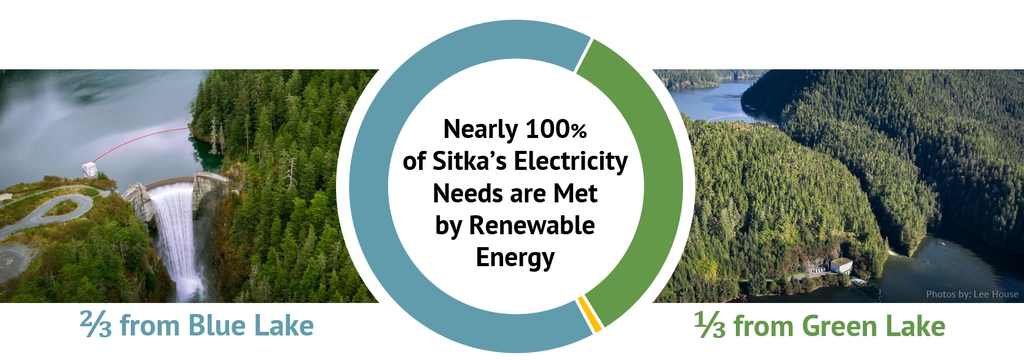 In Sitka, renewable electricity is generated and distributed by the CBS owned and operated grid. Click here to download the CBS Electric Summary for 2024 (PDF) |
2023 numbers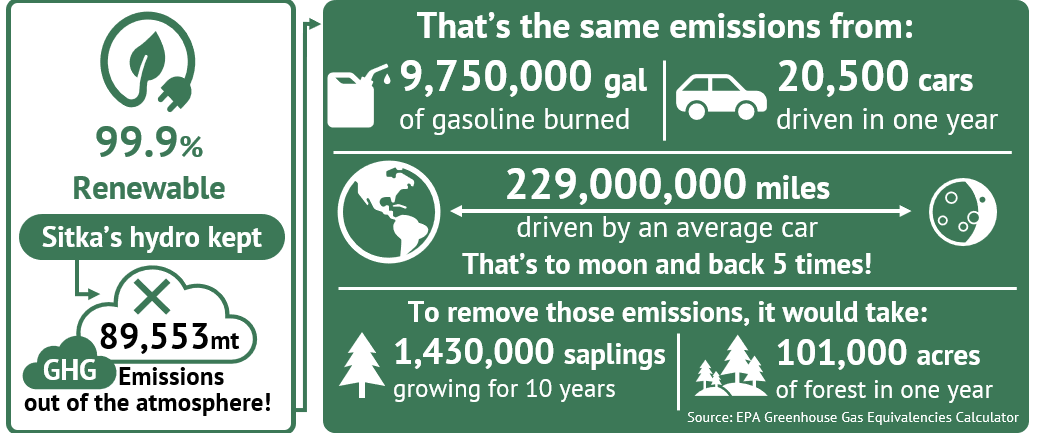 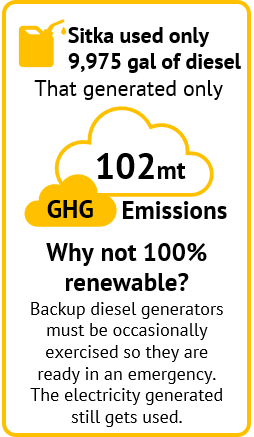 |
What is the Grid? The grid is an interconnected network of power plants, power lines, and power stations that move electricity from the source to the consumers (you!) There are 3 main parts of the grid: | ||||||
Generation Turning energy into electricity Generation sources can be divided into two groups: | Transmission Moving Electricity | Distribution Making Electricity Useable | ||||
Renewable: | Non-Renewable: |  | 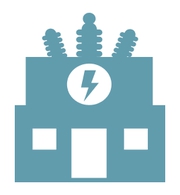 | |||
 |  | |||||
Renewable energy sources are naturally replenished on a human timescale. For example, solar and wind are resources that can be harnessed regularly to generate electricity and do not diminish the source. In Sitka, two hydroelectric dams provide the community with 99.9% of their electricity which is replenished by the abundant rain Sitka experiences. | Non-renewable energy sources do not replenish on a human timescale. Fossil fuels, like coal, petroleum oil, and natural gas are considered non-renewable because they take millions of years to form and are finite in amount. Sitka has backup diesel generators must be occasionally exercised so they are ready in an emergency. The electricity still gets used and is less than 1% of Sitka's electricity use. | Refers to high voltage lines which range from 35 – 765 kV (kilovolts) and is used to move electricity over long distances. High voltage lines are too much for home use. | The electricity travels through the transmission lines to a distribution substation. At distribution substations the electricity voltage is lowered to 12-230 V (volts) or 0.012-0.230 kV, that is safe for residential and commercial use. For example, a standard U.S. outlet uses 120 V, and a standard kitchen range requires a 240 V circuit. | |||
Get to Know Sitka's Grid Sitka's generation sources, the Blue Lake and Green Lake Hydroelectric Projects, are located on the southern side of the grid. Electricity generated by the turbines is moved through transmission lines to the Jarvis St. substation or the Marine St. substation where it is moved through feeder lines to homes and businesses. |
How Big is Sitka's Grid? | |||||||
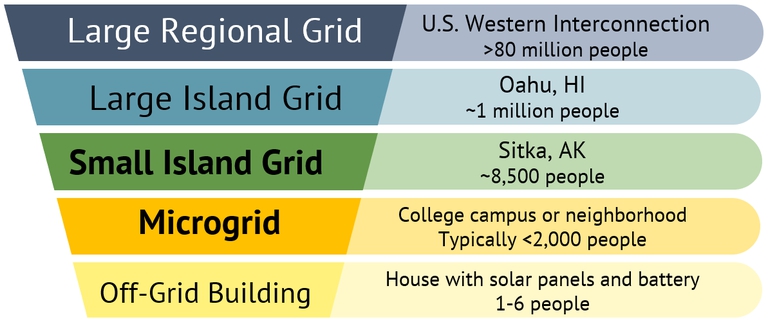 | Depending on how you look at it, Sitka's grid can be considered a small island grid or two microgrids. Regardless, islanded grids are typical in Alaska but not in the U.S., and are usually located on islands, remote villages, or difficult-to-access regions. The islanded and isolated nature have unique challenges most grids do not have and are often more expensive to operate. Interconnected grids like large regional grids are able to purchase and sell power from neighboring communities to meet electricity needs and offset costs when there is surplus. However, this comes with more rules and regulations that often do not apply to islanded grids like Sitka. | ||||||
Small Grids Have Big Challenges Some of them include: | |||||||
 | No interconnection to for balance or emergencies |  | High shipping costs and volatile fuel markets | ||||
 | Greater variability can reduce reliability | 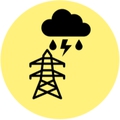 | The impact of extreme weather events are worse Smaller grids have fewer resources that can be used during an emergency. | ||||
How Much Electricity Can Sitka Make? | Based on historical rainfall and assuming consistent high loads and perfect reservoir management, Sitka could have potentially generated approximately... |
It depends. Because hydroelectric dams act like batteries that are recharged by rain, Sitka's ability to generate electricity depends on how much rain is captured. However, the dam reservoirs can only hold so much water and electricity usage varies seasonally and even hour by hour. How Much Electricity Does Sitka Use? Sitka uses between 2/3 to 3/4 of its potential generation Since Sitka's electricity depends on the natural environment which is unpredictable, careful monitoring and management of the reservoirs is key to ensuring Sitka's renewable electricity is available year-round, even in a low rainfall year. Additionally, as the community continues to electrify, efforts taken to conserve energy not only lower utility bills, it helps maintain Sitka's renewable electricity's availability. As part of SCRES, energy efficiency and conservation will play a critical role in Sitka's renewable energy future. | 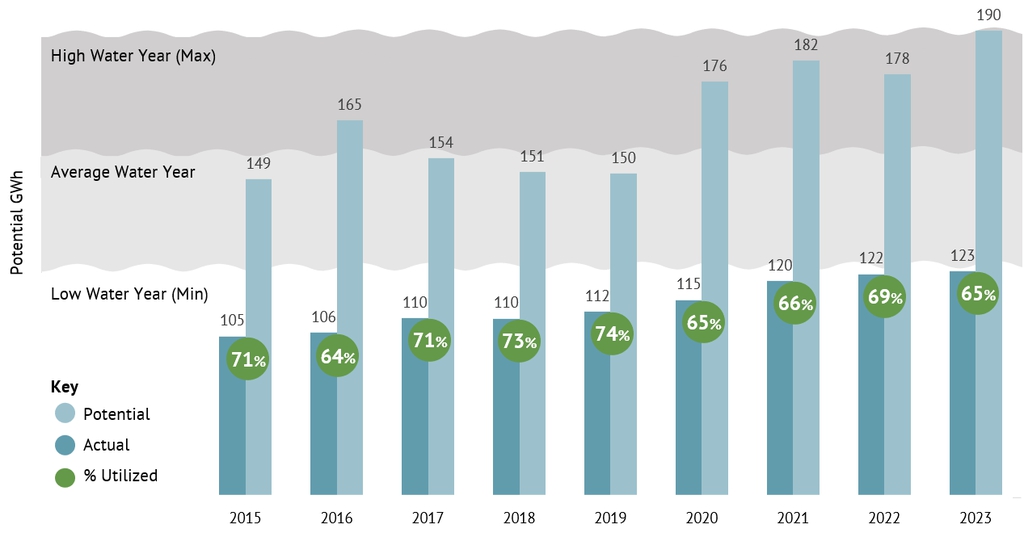 |
...but on average, used about 70% of its potential generation | |
How does Sitka Use Electricity? | |
In 2023, residents were the biggest consumers of electricity... | ...and Sitka's business sector is about half of the U.S. average**. |
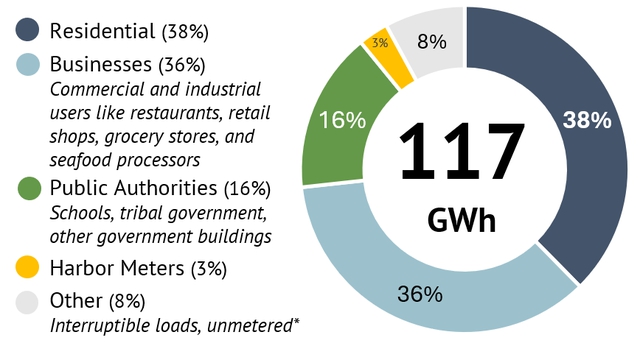 | 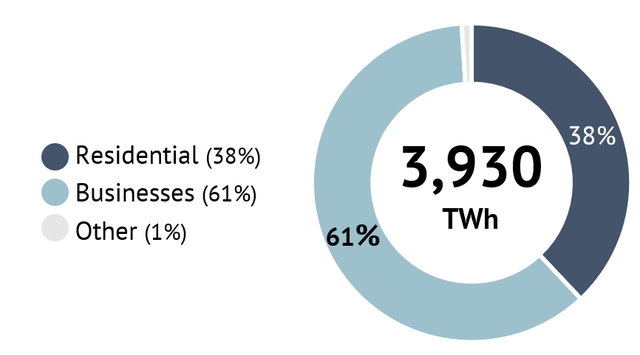 |
| *Interruptible loads are things that CBS can turn off to help control the electric load. Things like streetlights are unmetered. | **Monthly Energy Review, Electricity, Table 7.6, November 2023. |
Sitka uses more electricity in the winter than the summer. In the winter, residents uses the most electricity, while in the summer, businesses use more. 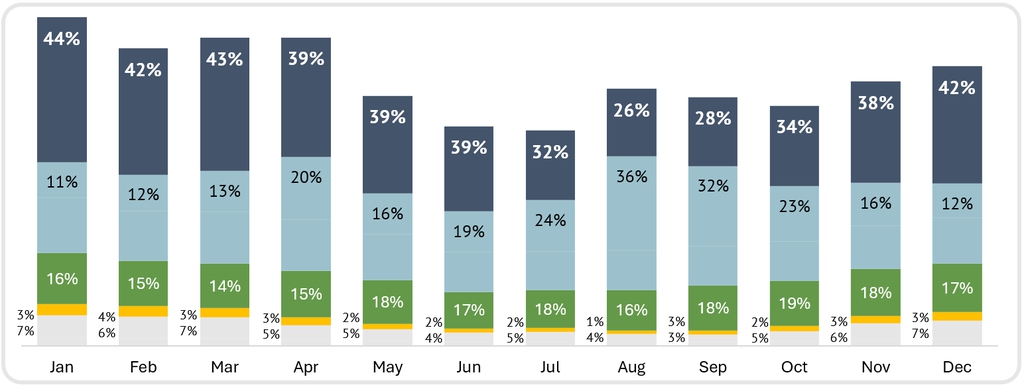 | |
How do Sitka's Rates Compare to the Rest of Alaska and the U.S.? | ||
Sitka utilizes variable rates with winter (Nov-Apr) rates set at 13.4¢ and 21.5¢ for the summer (May-Oct). Based on seasonal usage, the weighted average rate per kWh is 17.0¢. Sitka's average per kWh rate of 17¢ is only 1.2% higher than the national average of 16.8¢/kWh.  | ||
| How does Sitka’s monthly electricity usage and bills compare to others? | ||
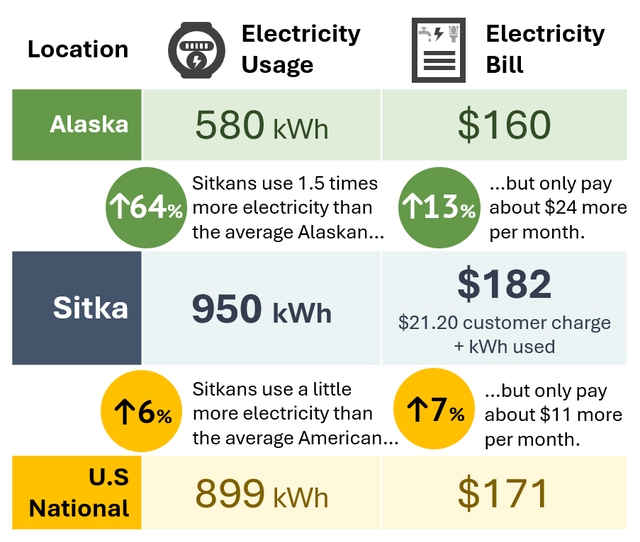 | Sitkans use nearly twice as much electricity as average Alaskans, but only pay about 13% more, or about $24 per month, on their electric bills. When compared to the rest of the U.S., average, Sitkans only use about 6% more electricity and pay about 7% more. How does this compare to total energy use? Energy used in a month includes not only electricity, but also other sources, like gasoline, fuel oil, and propane as well. These costs added together determine how much someone spends on energy every month. The best way to reduce total energy consumption is to taking actions to conserve energy, be it weatherizing your home or driving less, both reduce total energy used. To learn more about Sitka's energy requirements, click here. | |
| ||
 | Want to get alerts about the SCRES? Questions? Comments? Email sustainability@cityofsitka.org Phone (907) 747-1856 | |
Rates are based on 2024 CBS Utility Rates, eia.gov, and rates as published on other municipal webpages. This page was last updated October 11, 2024. | ||
Schedule an Energy Workshop!
Want to be more involved?
 (1).png?width=1024)
To be considered at the next Assembly Meeting, submit applications to the Clerk's Office today!